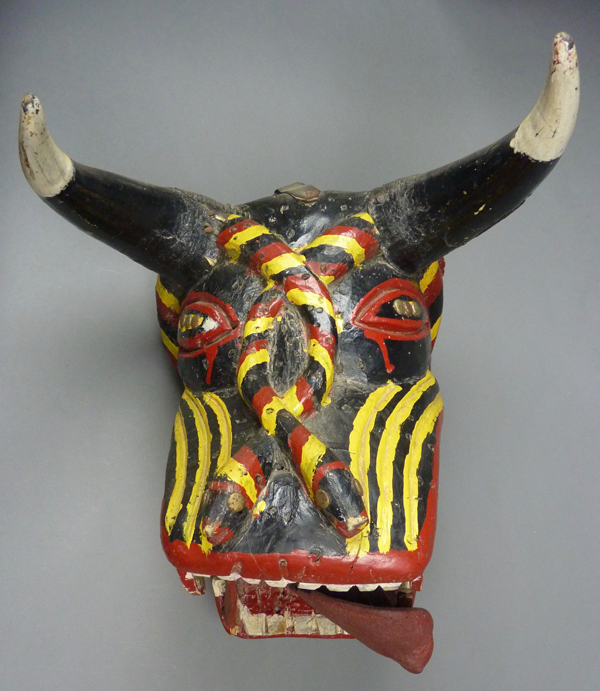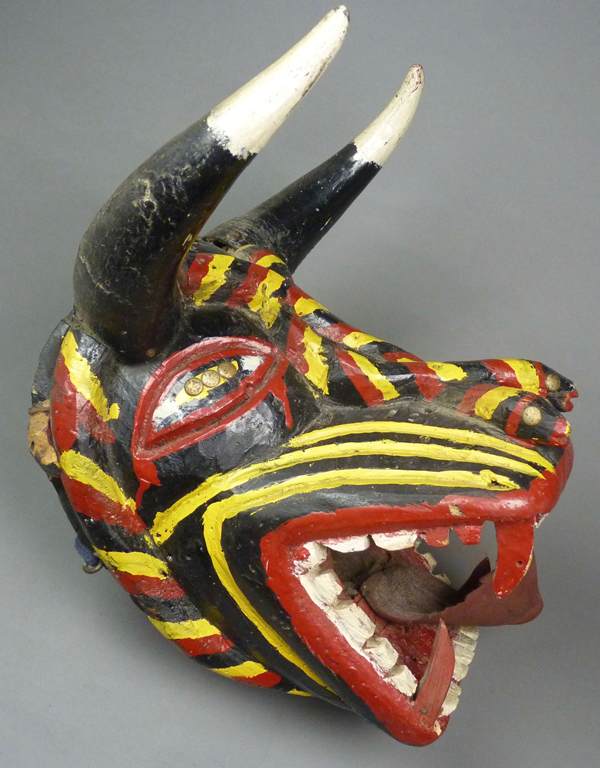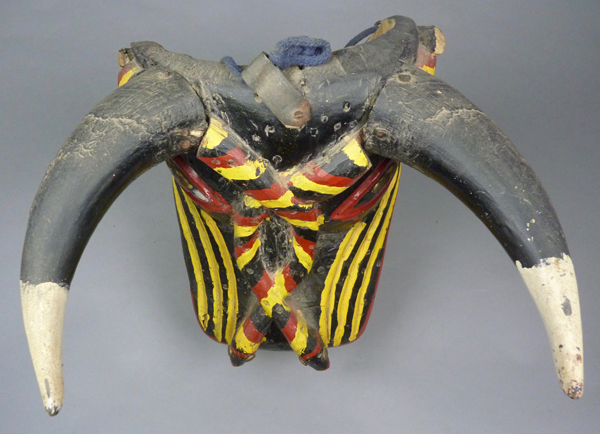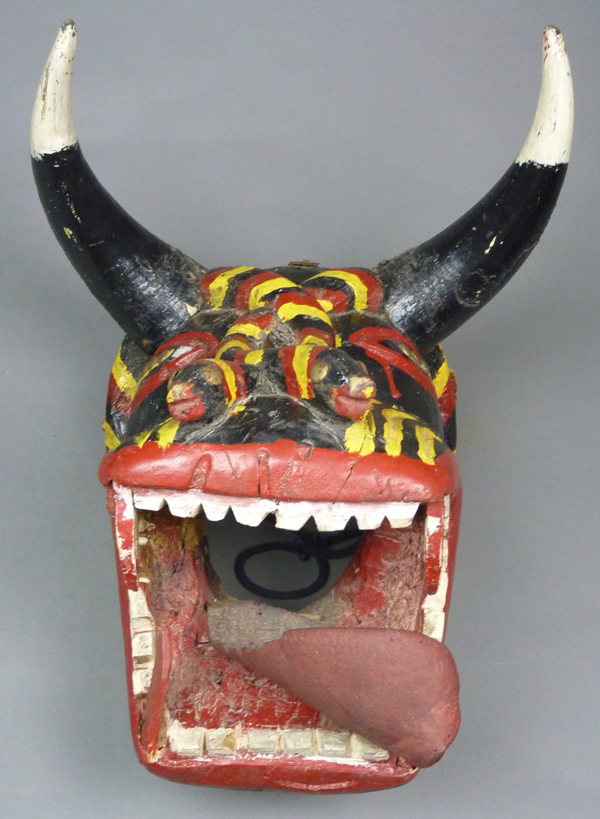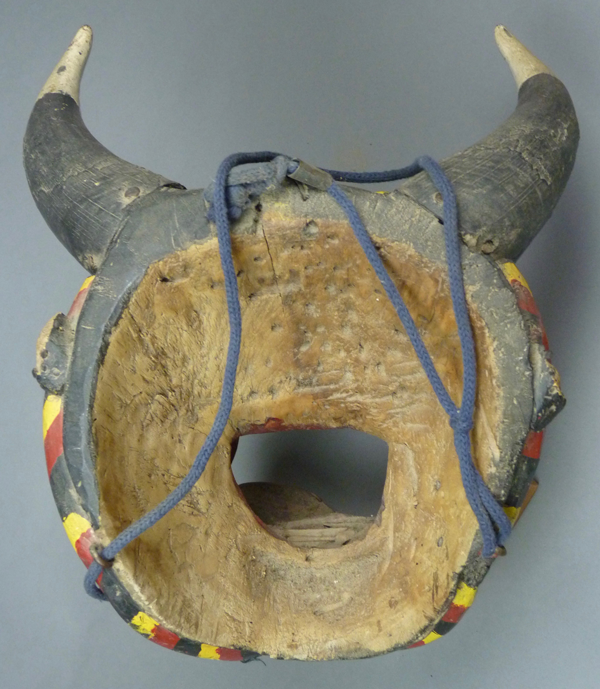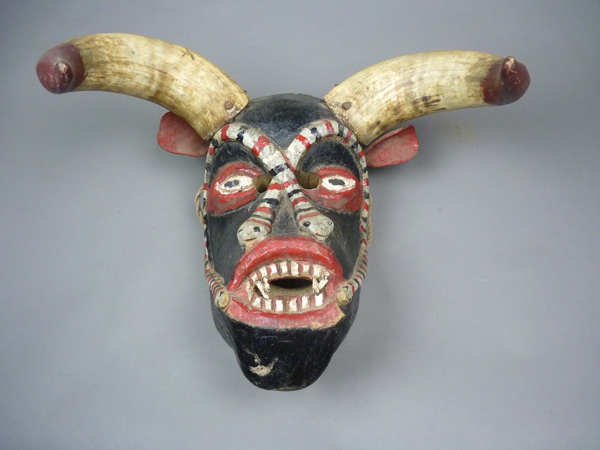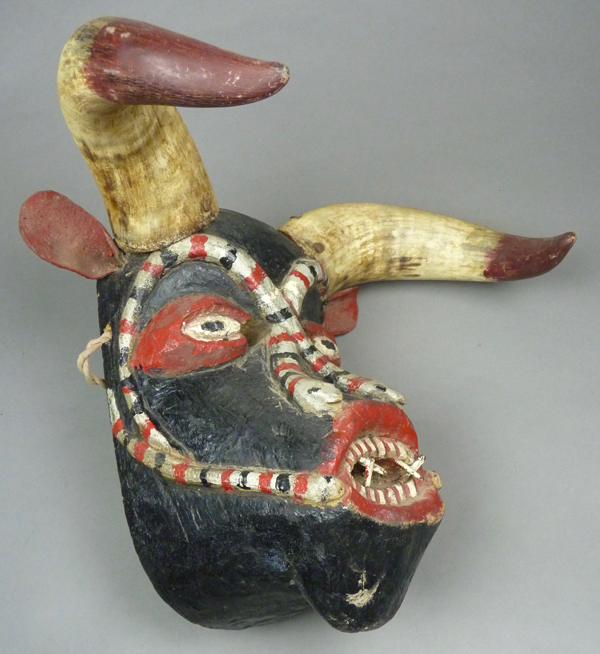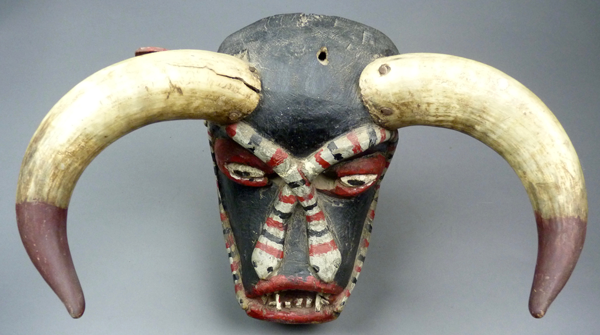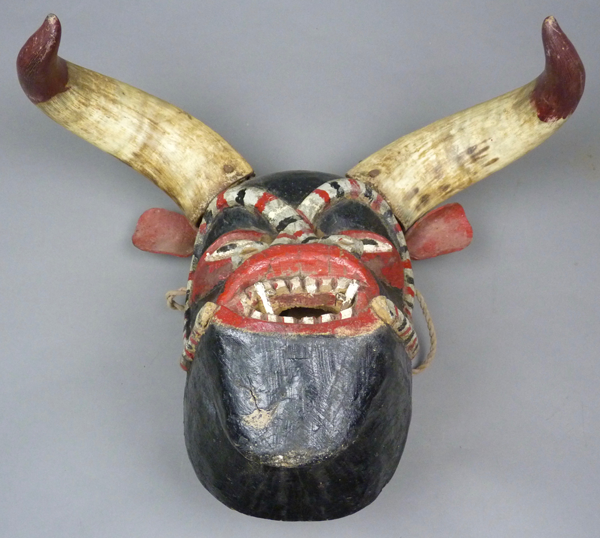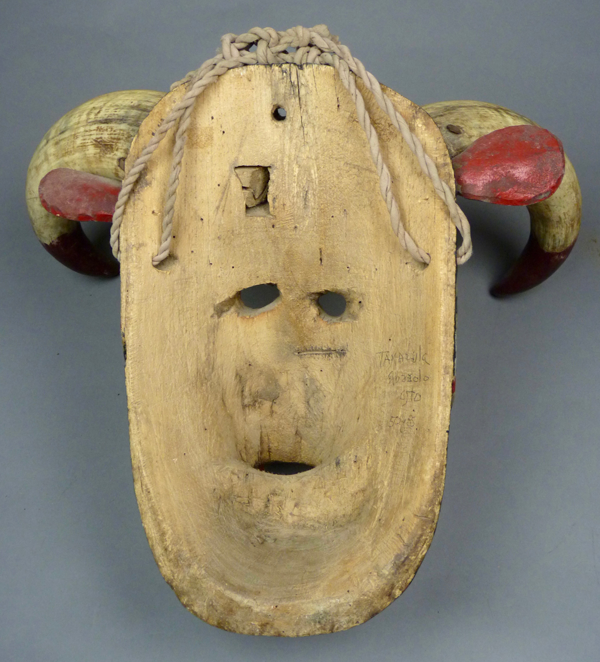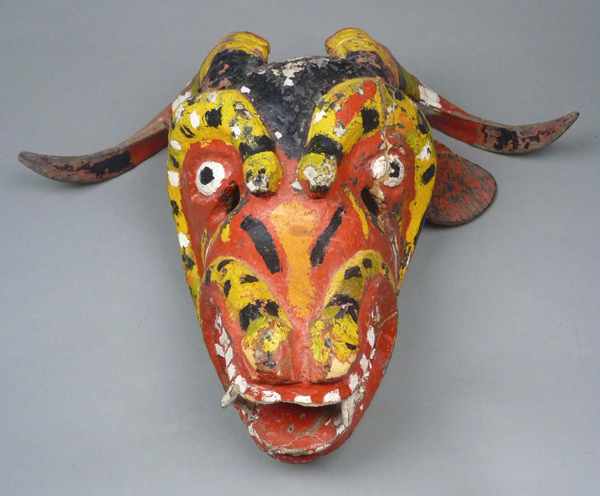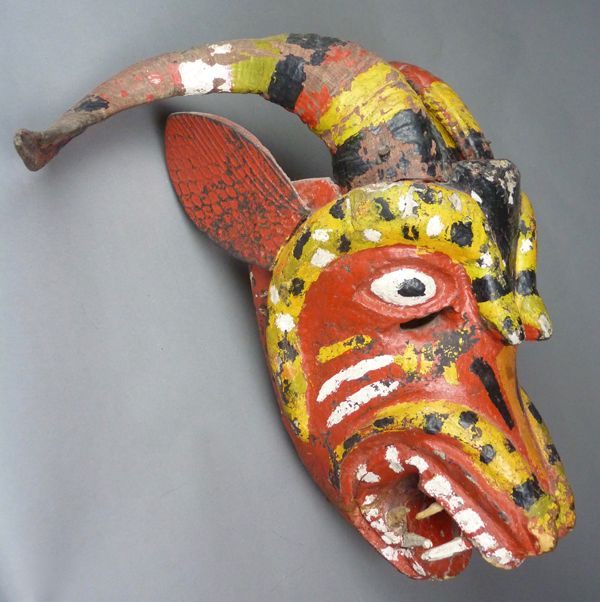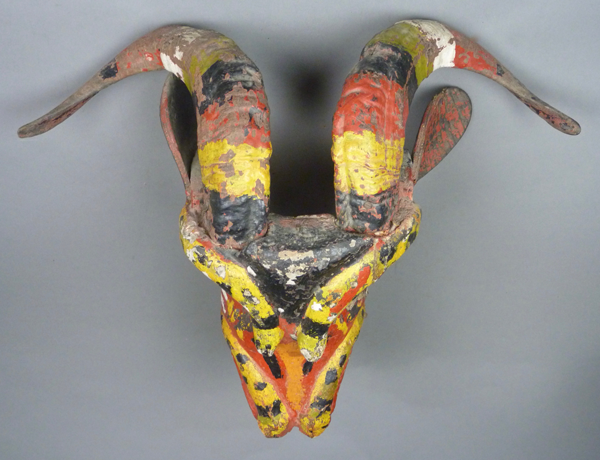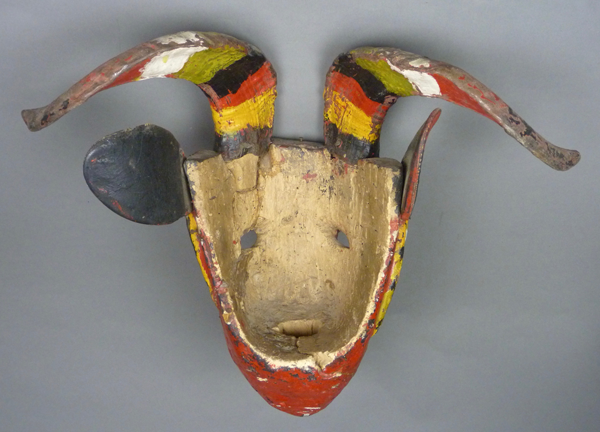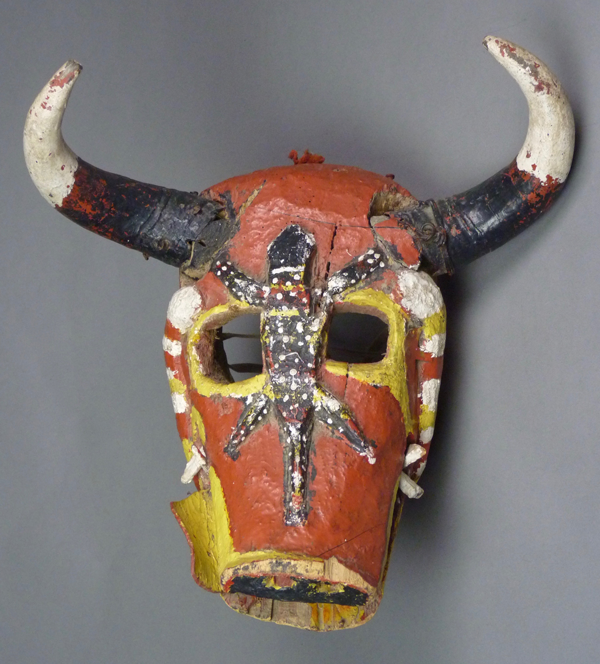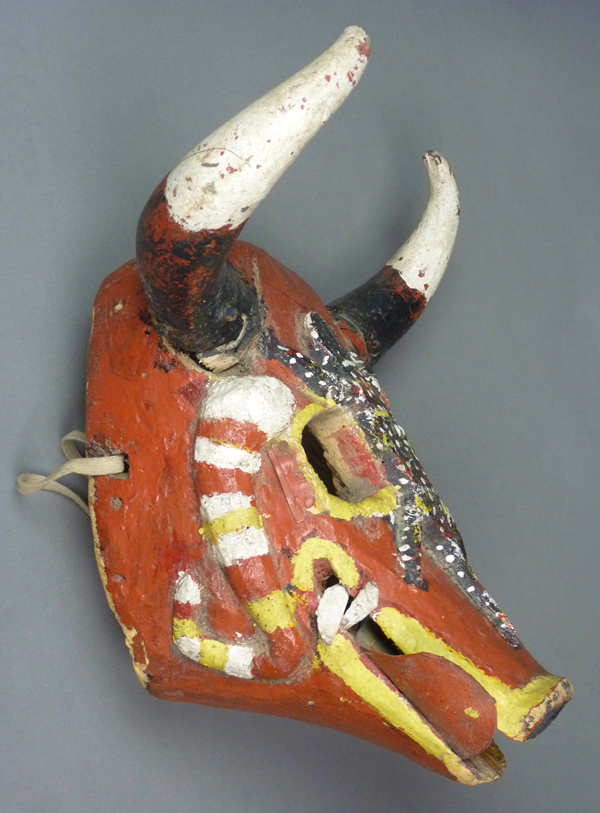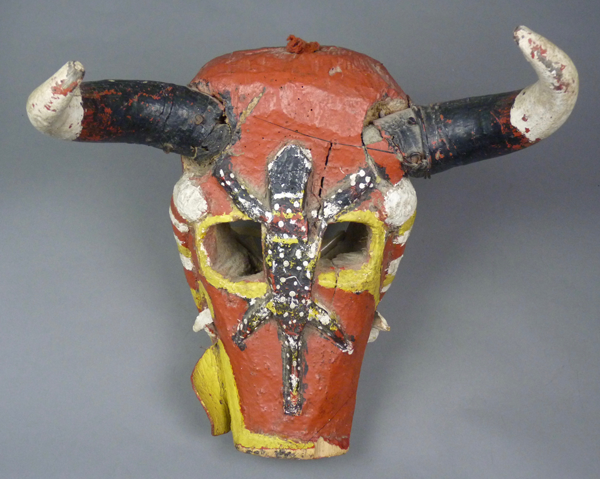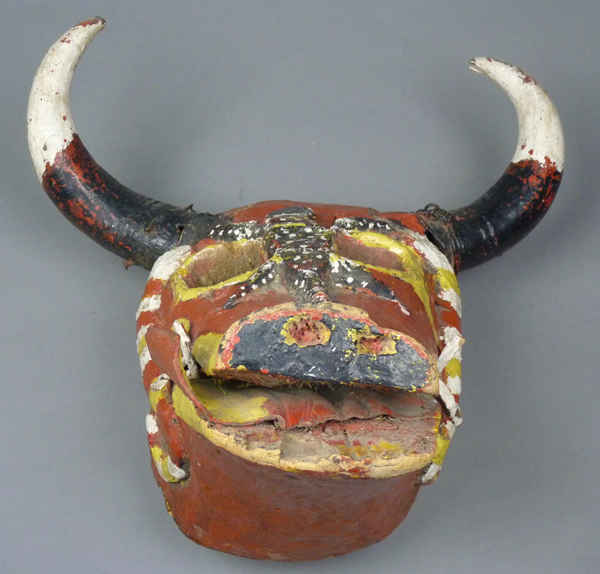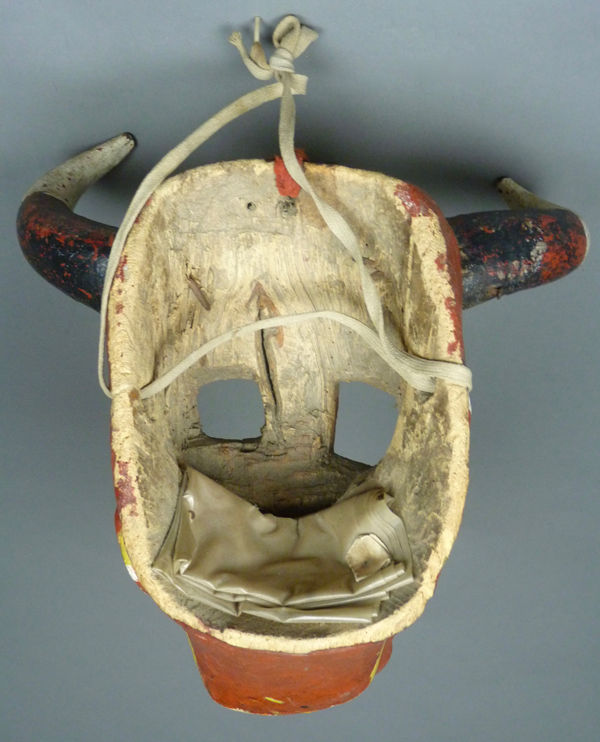Today we will examine four more of these larger Pastorela Diablo masks that were collected in the Mexican state of Guanajuato.
The first mask, which I purchased from Robin and Barbara Cleaver in 1999, was simply identified as an impressive Pastorela mask from the Mexican state of Guanajuato. It does pack quite a punch, doesn’t it?
This mask does not have the usual openings for vision, instead the dancer looks out through the large open mouth.
At some point, probably long after the mask was carved, the dancer acquired a supply of thumb tacks, which have been applied to the eyes of the mask and the snakes.
There are additional snakes heads poking out of the back edge of the mask. In the top view that follows, their stubs can be seen. I speculate that these snakes formed open loops that circled towards the front of the mask, but these were easily broken or they were displaced by a new set of horns?
The view through the open mouth is certainly more than adequate.
This mask is 12 inches tall, 10 inches wide, and 10½ inches deep, excluding the horns. With the horns it is 16 inches tall and 12 inches wide.
From the back one sees again the stubs of apparent snake heads. The staining from long use is evident as well. This mask was worn on the dancer’s brow.
The second mask, which was collected in Tamazula, in the Municipio of Abasolo, Guanajuato, was obtained from Robin and Barbara Cleaver in 1993. It does have the usual vision slits.
Two snakes cross over the muzzle and two more present at the corners of the mouth.
This is another very handsome mask. Probably it has a bull’s face. Note the sagging chin.
We are meant to perceive these horns as bloody from use.
This mask is 12½ inches tall, 7 inches wide, and 5½ inches deep, not counting the horns. With the horns it is 16 inches tall and 15 inches wide.
The back is not only stained from use, but it is also worn very smooth. At the time of collection, probably in the 1970s or 1980s, the mask was said to have been 50 years old, as if it dates to the 1930s or 40s, and this information was written on the back.
The last two masks in today’s post were purchased together, along with another from Michoacán that you have seen in an earlier post, all from the Cavin Morris Gallery, in December of 1995. This one came only with the information that it was found in the state of Guanajuato. I have long admired the colorful paint on this mask. There are four snakes.
These are goat’s horns. In this region cow and goat horns are both popular on Pastorela Diablo masks. In other regions deer horns are also seen frequently on Diablo masks.
These ears were made from recycled shoe leather.
On this mask all of the snakes are headed in the same direction.
This mask is 10½ inches tall, 8 inches wide, and 7 inches deep, excluding the horns. With them it is 14 inches tall and there is 20 inches between the horn tips.
The back is stained from heavy use.
This is the other mask purchased from the Cavin Morris Gallery in 1995. It is unusual because it highlights a lizard on the face instead of snakes.
However there are also snakes on the cheeks.
This mask has an ambiguous face. Is this a coyote, a pig, or some other animal?
This mask is more crudely carved compared to many of the others, but it is a powerful mask.
This mask is 12 inches tall, 7½ inches wide, and 9 inches deep, not counting the horns. With the horns it is 16 inches tall and 13½ inches wide.
The back is worn. A plastic pad has been applied to soften the surface against the dancer’s face.
Next week we will look at some Pastorela masks from Lagos de Moreno in the Mexican state of Jalisco.

